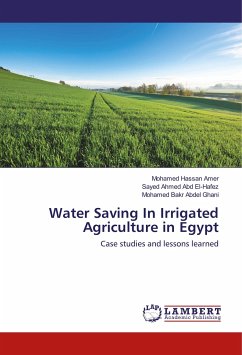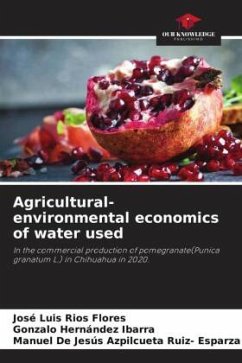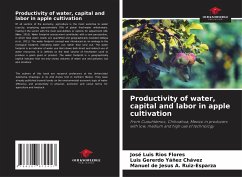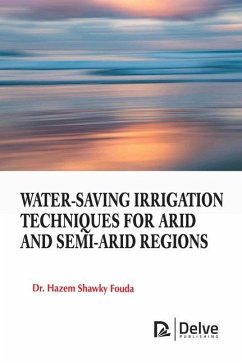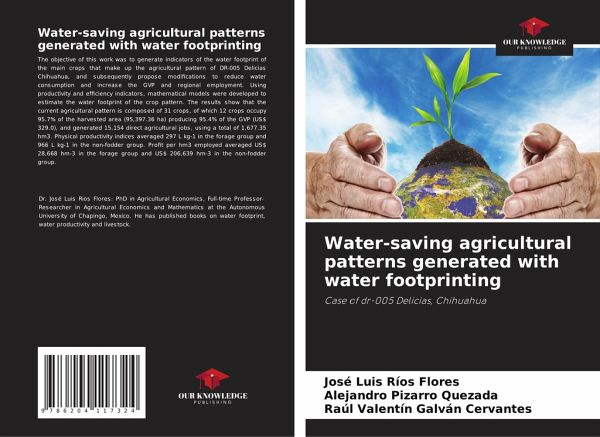
Water-saving agricultural patterns generated with water footprinting
Case of dr-005 Delicias, Chihuahua
Versandkostenfrei!
Versandfertig in 6-10 Tagen
36,99 €
inkl. MwSt.

PAYBACK Punkte
18 °P sammeln!
The objective of this work was to generate indicators of the water footprint of the main crops that make up the agricultural pattern of DR-005 Delicias Chihuahua, and subsequently propose modifications to reduce water consumption and increase the GVP and regional employment. Using productivity and efficiency indicators, mathematical models were developed to estimate the water footprint of the crop pattern. The results show that the current agricultural pattern is composed of 31 crops, of which 12 crops occupy 95.7% of the harvested area (95,397.36 ha) producing 95.4% of the GVP (US$ 329.0), an...
The objective of this work was to generate indicators of the water footprint of the main crops that make up the agricultural pattern of DR-005 Delicias Chihuahua, and subsequently propose modifications to reduce water consumption and increase the GVP and regional employment. Using productivity and efficiency indicators, mathematical models were developed to estimate the water footprint of the crop pattern. The results show that the current agricultural pattern is composed of 31 crops, of which 12 crops occupy 95.7% of the harvested area (95,397.36 ha) producing 95.4% of the GVP (US$ 329.0), and generated 15,154 direct agricultural jobs, using a total of 1,677.35 hm3. Physical productivity indices averaged 297 L kg-1 in the forage group and 966 L kg-1 in the non-fodder group. Profit per hm3 employed averaged US$ 28,668 hm-3 in the forage group and US$ 206,639 hm-3 in the non-fodder group.



